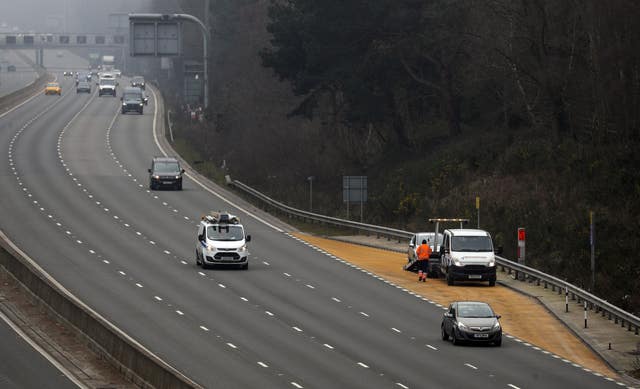Drivers increasingly avoiding the left hand lane on smart motorways
More than a third think hard shoulders should be reinstated.

An increasing number of motorists are avoiding the left hand lane on smart motorways even when they’re open because of fears over safety.
The Government has announced a five-year pause on the introduction of new smart motorways while it assesses whether they’re safe, but motorists are taking matters into their own hands.
Smart motorways typically see the hard shoulder replaced with a live lane, theoretically increasing the road’s capacity. Overhead signage can then warn other drivers if a vehicle has broken down, for example, and close the lane by displaying a red ‘X’.
Although laybys are built into the network for motorists to stop in an emergency, concerns have been raised about the fact that you can’t always make it to a refuge spot when breaking down, as well as how quickly motorway operators can spot a stranded vehicle and warn oncoming cars.

New research suggests more motorists than ever are shunning the left lane altogether. A massive 73 per cent of British drivers say they avoid driving in the converted hard shoulder even when signage allows, a significant increase on the 56 per cent who said the same in a 2019 survey.
The survey of 2,000 UK adults on behalf of vehicle repair company Kwik Fit found that understanding of the new road signage had increased, but safety concerns were the key reason why many were keeping to the right.
Thirty-one per cent of respondents said they avoided the left lane over fears there could be a stationary vehicle ahead, while 30 per cent said they prefer to treat it like a ‘normal’ motorway, leaving a ‘hard shoulder’ to their left because they don’t think smart motorways are safe.
The number of people concerned about using the left lane because they are unsure whether they’re allowed has decreased from 29 per cent to 22 per cent since 2019’s survey, while 19 per cent of those who do not use the left lane say it’s because they are concerned about having no ‘escape route’.
When asked about the Government pausing the introduction of new smart motorways, 36 per cent said they should be cancelled altogether with hard shoulders reinstated on existing smart motorways.
Roger Griggs, communications director at Kwik Fit, said: “Smart motorways have been a huge topic of debate and it is absolutely correct for the government to pause their development to both gather data and ensure that the UK’s motorways are as safe as possible.

“It is clear that many drivers are yet to be convinced about the safety of smart motorways and therefore there must be clear transparency about all the data being gathered and the evidence on which future decisions are based.”
Despite pausing new smart motorways while it reviews their safety, the Government announced in January that it was investing £900 million to upgrade existing ones by introducing more refuge areas and technology to spot stranded vehicles.
Transport Secretary Grant Shapps said: “While our initial data shows that smart motorways are among the safest roads in the UK, it’s crucial that we go further to ensure people feel safer using them.
“Pausing schemes yet to start construction and making multimillion-pound improvements to existing schemes will give drivers confidence and provide the data we need to inform our next steps.”





